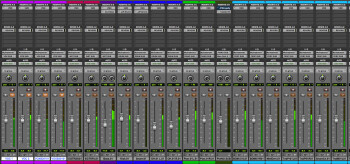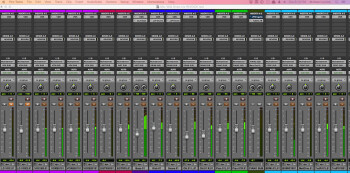Professional engineers typically render more than just a full version when they finish mixing a song. They also run a number of variations, which are referred to as "alternate mixes." In this article, I'll tell you what they are and why you should be doing them, too.
The term “alternate mixes, ” in this case, don’t mean different mixes of the full song. What it refers to are versions that you render in addition to the full version, with specific elements removed to allow for different contingencies and applications.
The custom of doing alternate mixes was born in the days of tape, when it was an absolute necessity, because it was difficult to recall a mix exactly. But even though today’s DAWs give us total recall, and theoretically we could re-open the exact mix down the road, if the need for an alternative version were to arise, it’s safer to do it now.
Why is that? Because our computer systems sometimes change over time, and it’s not always possible to recall a mix exactly as you had it previously, because you might have used plug-ins (processor or virtual instrument) that are no longer compatible with your system. If you’re asked down the road to provide a variation on the mix, you might not be able to get back to where you were.
Considering that most DAWs offer faster-than-realtime offline mixing, it’s not going to take you very long to run a small number of specific variations on the mix, that will cover you for a lot of scenarios without the need for a recall. If you’re doing any for-hire mixing jobs, you’ll be expected to provide these variations.
Here are the typical alternates to run in addition to the full mix.
Instrumental mix
This one has no vocals whatsoever on it. It’s easy to setup, just mute all the vocal tracks. Be careful if you’re muting from a vocal subgroup, because faint vocal sounds could still be audible through the effects returns. You’re safer muting the individual vocal tracks.
Why a mix without vocals? It’s possible that you (or your client if you’re mixing for someone else) will want to change the vocal sound over time, perhaps with a different EQ or effects. If you print an Instrumental Mix at the time of your mix session, you’ll have that track available, and you can just lay the original vocal track on top of it, and process it as you choose.
TV mix
The TV mix contains everything except the lead vocal. If you (or your mix client) needs a backing track of the song for performing onstage or on TV, radio, or a podcast, the TV mix is critical.
Accapella mix
As you might have guessed, this one has all the vocal tracks (lead and background), but the instruments are muted. This is handy to have in case you, or somebody else, decides to do a remix of the song, putting a new arrangement around the original vocals. You might want to do two versions of the accapella mix: one with and one without effects.
Radio mix
This mix is only necessary for songs with off-color lyrics, which can’t be used on broadcast radio. If your song fits that description, edit or bleep the curse words (on a copy of the session, of course), and then run a mix with a radio-friendly version of the vocal track instead of the original. You don’t want to miss a potential opportunity because you don’t have a clean version of your song.
Stems, anyone?
If you have time, you also might want to consider bouncing each track soloed as an individual track stem. That preserves their volume and panning relationships to each other, and their effects, but gives you the flexibility to change the arrangement later by replacing or revising one of the elements.
Stems aren’t a necessity, but if you have time, they’re always good to have around. Some DAWs, such as PreSonus Studio One and Apple Logic Pro X, allow you to print individual stems from all the tracks in one pass.
Here’s an important point: Make sure that all of your alternate mixes start from the very first bar and beat of the DAW file for the song. Although you probably won’t be joining them together, you might want to, say, combine the acapella mix with a revision of the instrumental mix, or something to that effect, and if all the mixes start at the very beginning of the sequence, you can always combine them and know they’ll be in time with each other.


